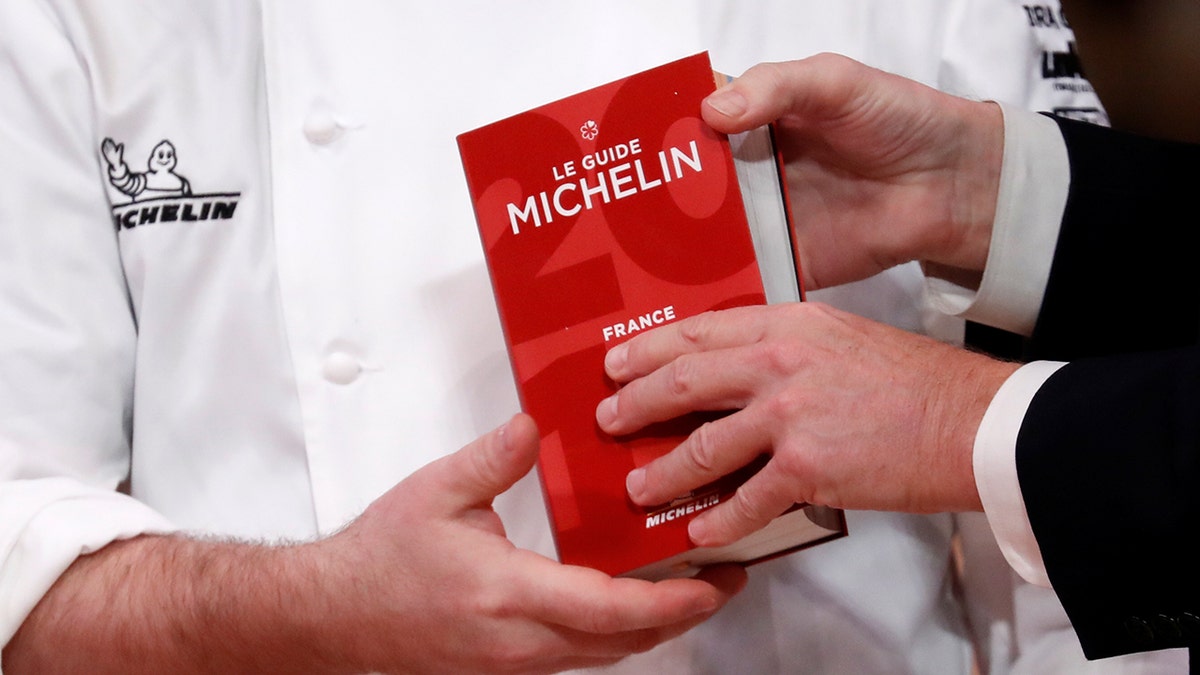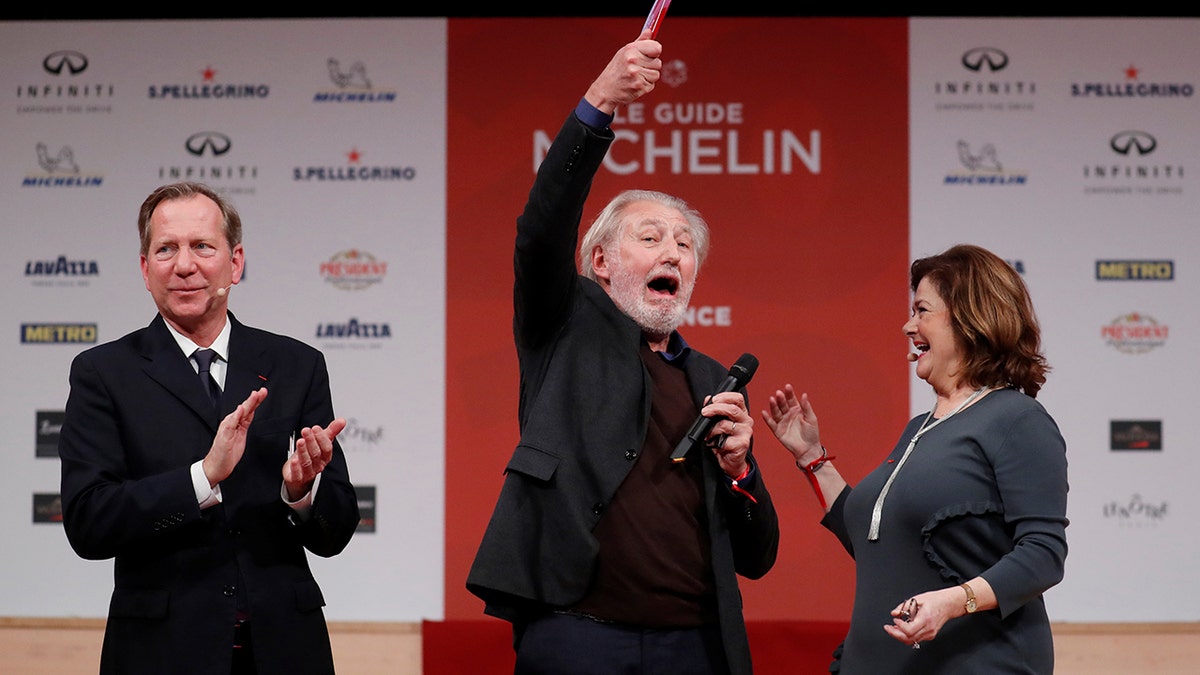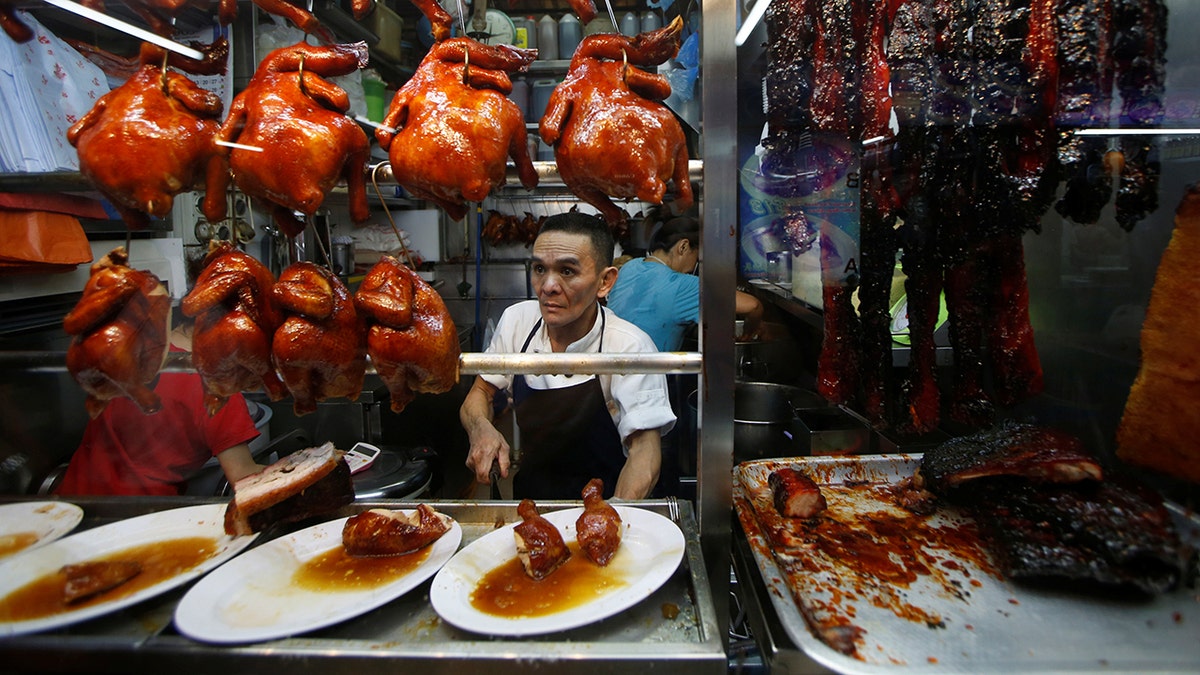
Everything you've ever wanted to know about Michelin stars, the Michelin guide, and even the Michelin Man. (Reuters)
In the 2007 Pixar film, Ratatouille, renowned chef Auguste Gusteau dies of heartbreak after his flagship restaurant (named after him) loses a star.
The animated movie drew striking comparisons to the real-life story of Bernard Loiseau: a chef whose suicide in 2003 was linked to rumors that his acclaimed Burgundy restaurant, La Côte d’Or, was in danger of losing a Michelin star. This real-life tragedy — and indeed, even the fictional film about a rodent chef — have cemented the Michelin star’s mystique and gravitas.
Though the Michelin Guide has simultaneously brought famously unapologetic chef Gordon Ramsay to tears, while delivering chef Maxine Meilleur unmeasured joy (“it’s like winning the gold medal in the Olympics”), the restaurant rating system has humble beginnings.
More From Travel + Leisure
- Meghan Markle's Rumored Wedding Dress Designer Shares His Perfect Day in London With T+L
- How This 22-year-old Landed Her Dream Job As a Pilot — and Became Instagram Famous in the Process
- A 9-year-old Got an Upgrade to Business Class With This Adorable Letter
- These Are the Most Romantic Restaurants in America, According to OpenTable
According to Business Insider, Michelin guides were originally a promotional freebie from the eponymous French tire company eager to use any excuse to get drivers behind the wheel. Michelin began sending anonymous inspectors to evaluate restaurants in 1926 and now, more than 90 years later, Michelin is a watchword for excellence, exclusivity and expense.
The three Michelin-star ranking is considered the highest accolade in the industry. And yet the guide never presents itself as a list of the best restaurants in the world, an inventory of the top chefs, or even the most expensive meals.

French chef Pierre Gagnaire reacts after earning an award at the 2018 Michelin ceremony. (Reuters)
What Michelin stars actually mean
Unlike other systems ranking luxury or quality in the hospitality industry (which typically use a scale of five stars), the Michelin Guide has only three. In addition to its one to three-star rankings, the Michelin guide also includes restaurants it has highlighted in its “Bib Gourmand” category, as well as those restaurants whose only commendation is their inclusion in the guide. Here’s how Michelin’s five categories break down:
- The Michelin Plate: The least prestigious of Michelin’s categories of recognition, L’Assiette Michelin, or the Michelin Plate, signifies any restaurant included in the Michelin Guide with neither stars nor a “Bib Gourmand” designation. This is not nothing, however. Many restaurants never see the inside of a Michelin Guide, much less a star. The Michelin Plate indicates “restaurants where the inspectors have discovered quality food.” This is a new addition, introduced in the guide’s 2018 edition.
- Bib Gourmand: The second youngest of Michelin’s categories of recognition, the Bib Gourmand ranking dates from 1955. Measuring “quality food at a value price,” it’s essentially Michelin’s inexpensive eats category. Keep in mind that this doesn't mean the restaurants are actually cheap. After all, Michelin inspectors aren't reviewing dollar slices. To be considered, the meal must include two courses, a glass of wine, and dessert without exceeding $40 per person. The denomination honors the Michelin Man, whose name (yes, he has a name) Bibendum comes from a famous line from the Roman poet Horace, who wrote, "Nunc est bibendum,” or “Now we must drink.”
- One Michelin Star: Restaurants deemed to be “une très bonne table dans sa catégorie," or a very good restaurant in its category, are awarded with a single Michelin star. Michelin commends these restaurants for offering food at a consistently high standard, and deems them worth a stop if you’re already there.
- Two Michelin Stars: Restaurants judged as having “table excellente, mérite un detour," or excellent cooking worth a detour. Michelin commends these restaurants for offering exceptional cuisine, with skillfully and carefully crafted dishes of outstanding quality. According to Michelin, you'll want to go out of your way to have a meal there.
- Three Michelin Stars: Restaurants recognized for “une des meilleures tables, vaut le voyage," which translates to exceptional cuisine worth a special journey. Michelin commends these restaurants as places that feed guests extremely well, often superbly, and serve distinctive dishes executed from superlative ingredients. Basically, the guide says these restaurants are worth traveling for.
Who makes the Michelin Guide?
More mysterious than the Michelin Guide’s criteria for selection are the people who make those decisions. A team of 120 anonymous inspectors work in 23 different countries around the world, traveling three out of every four weeks (every night at a new hotel) and eating both lunch as well as dinner out while on the road.
Michelin covers the costs of their inspector’s travel, but not that of any guests or companions. On average, a Michelin inspector drives over 18,000 miles a year and eats at 240 different restaurants.
Restaurants listed in the Michelin Guide are visited once every 18 months, unless they are being considered for a change in status. One-star restaurants will receive four visits in a single year if they are to receive a second star, and two-star restaurants will be visited ten times if they are to receive three.
What Michelin gets right — and wrong
The Michelin Guide is no stranger to criticisms that they are Francocentric, that they are limited by their geography-based guides, and that they are biased towards expensive or “fancy” restaurants.
A casual analysis of Michelin rankings does give these observations some merit. France has the most Michelin stars in the world, with 600 starred restaurants — nearly 200 more than second-place Japan and almost twice as many as Italy, in third. (French food is really very good. But is it that good?)
Moreover, restaurants in areas without Michelin Guides — no matter how good they are — will never receive Michelin stars. And a Venn diagram of four-dollar sign restaurants and three-Michelin star restaurants would show a Michelin island surrounded by a very costly sea. (Not all expensive restaurants have three Michelin stars, but all restaurants with three Michelin stars are expensive.)
“It is all about the food,” Rebecca Burr, the editor of the Michelin Guide, insisted in a 2014 interview with The Telegraph. But when she cited the qualities that elevate restaurants through the rankings, she described — in addition to “technical strength” and “signature dishes" — a quality of “refinement, something that sets them apart” and a restaurant’s ability to provide the “ultimate culinary experience.” (These qualities tend to cost a lot, even if they relate back to food.)

Hawker Chan Hong Meng, who won a Michelin star, sells soya sauce chicken at his Hong Kong Soya Sauce Chicken Rice and Noodle stall at Chinatown food center in Singapore. His stall's signature dish cost just $5.20 when he was awarded the honor in 2016. (Reuters)
Though Michelin famously awarded single stars to two (delicious) hawker stalls in Singapore in its 2016 guide — why not three?
Many travelers, in fact, would likely prefer to make the “special journey” to Singapore to explore the city’s veritable buffet of hawker centers, rather than to visit its one three-star restaurant, Joel Robuchon, of which there are 24 more in the world and four more of equal rank.





















